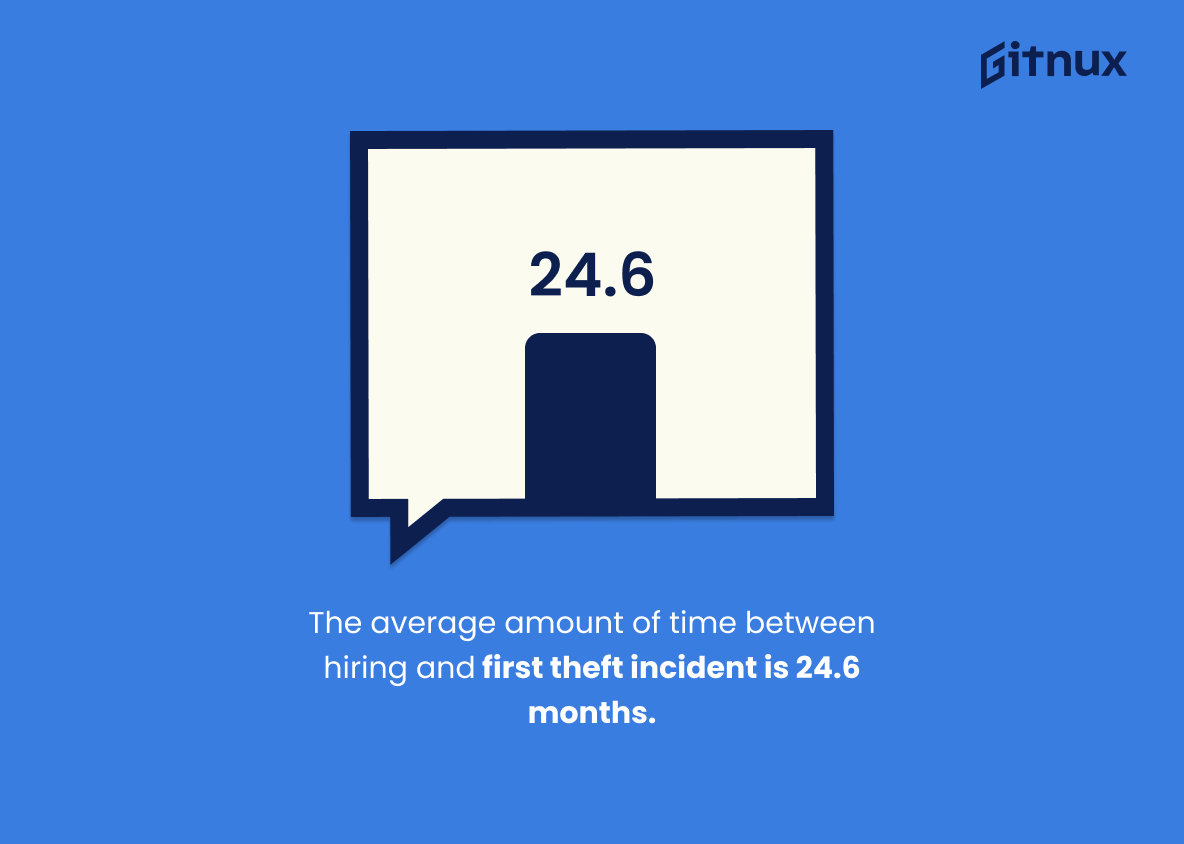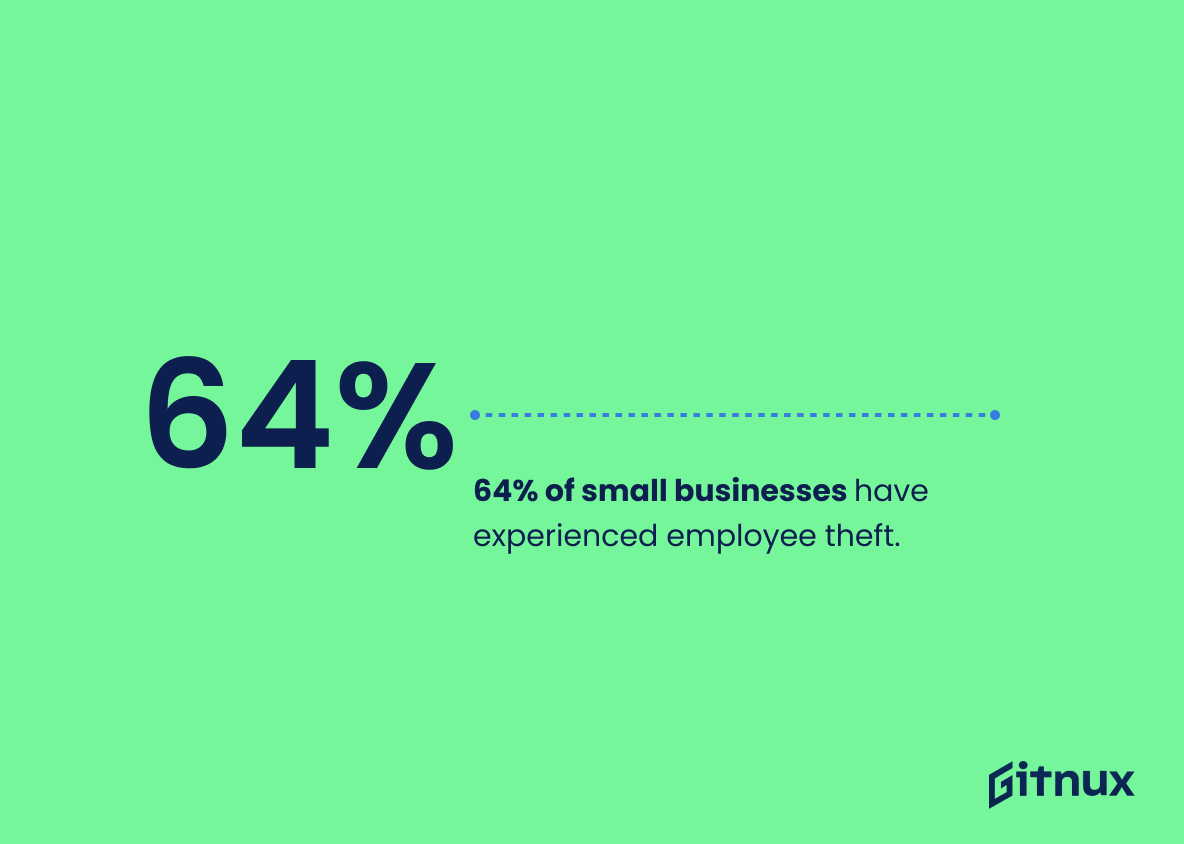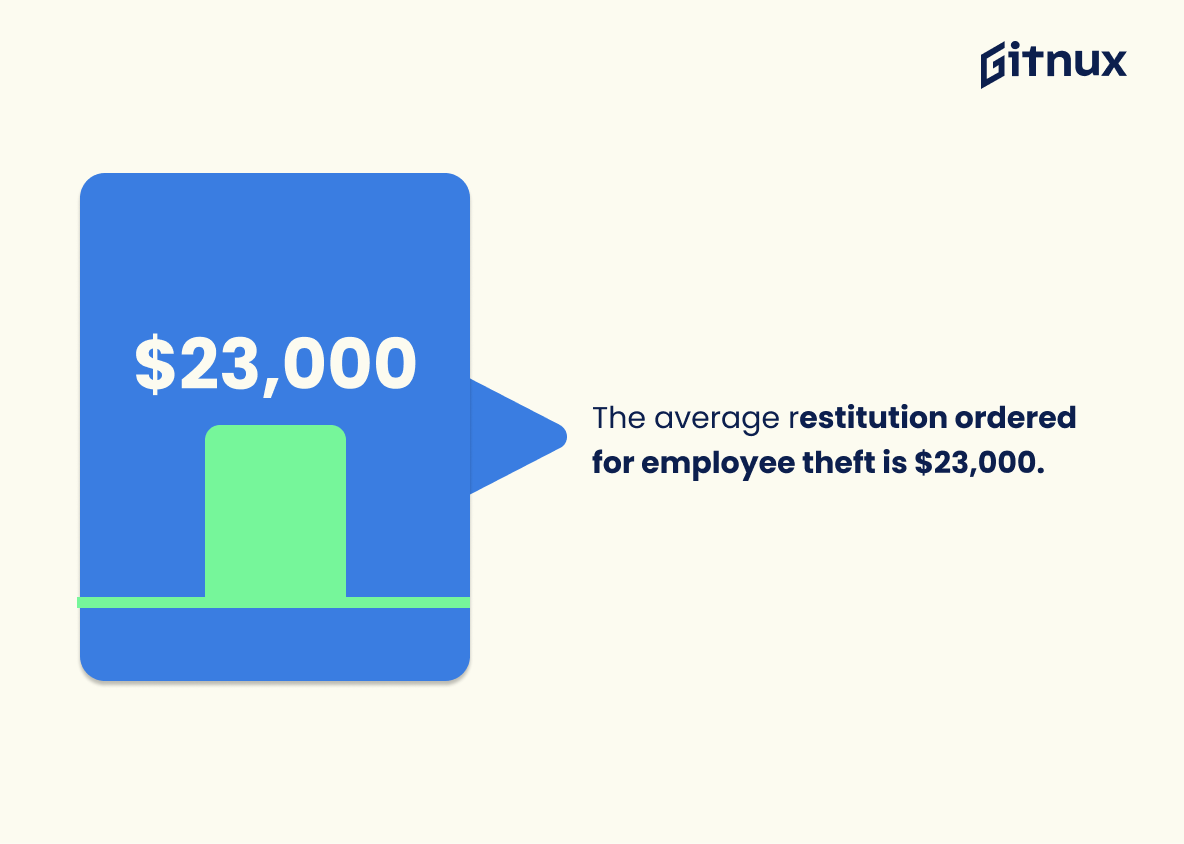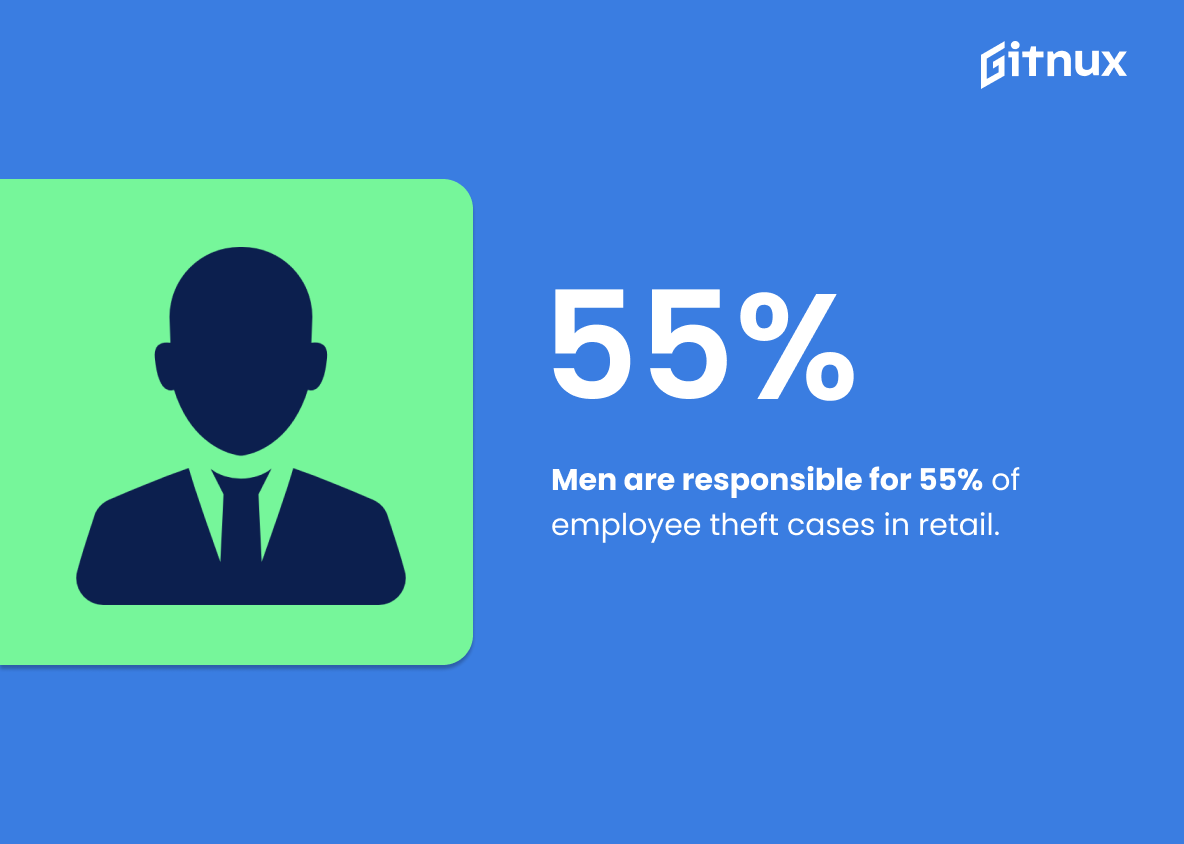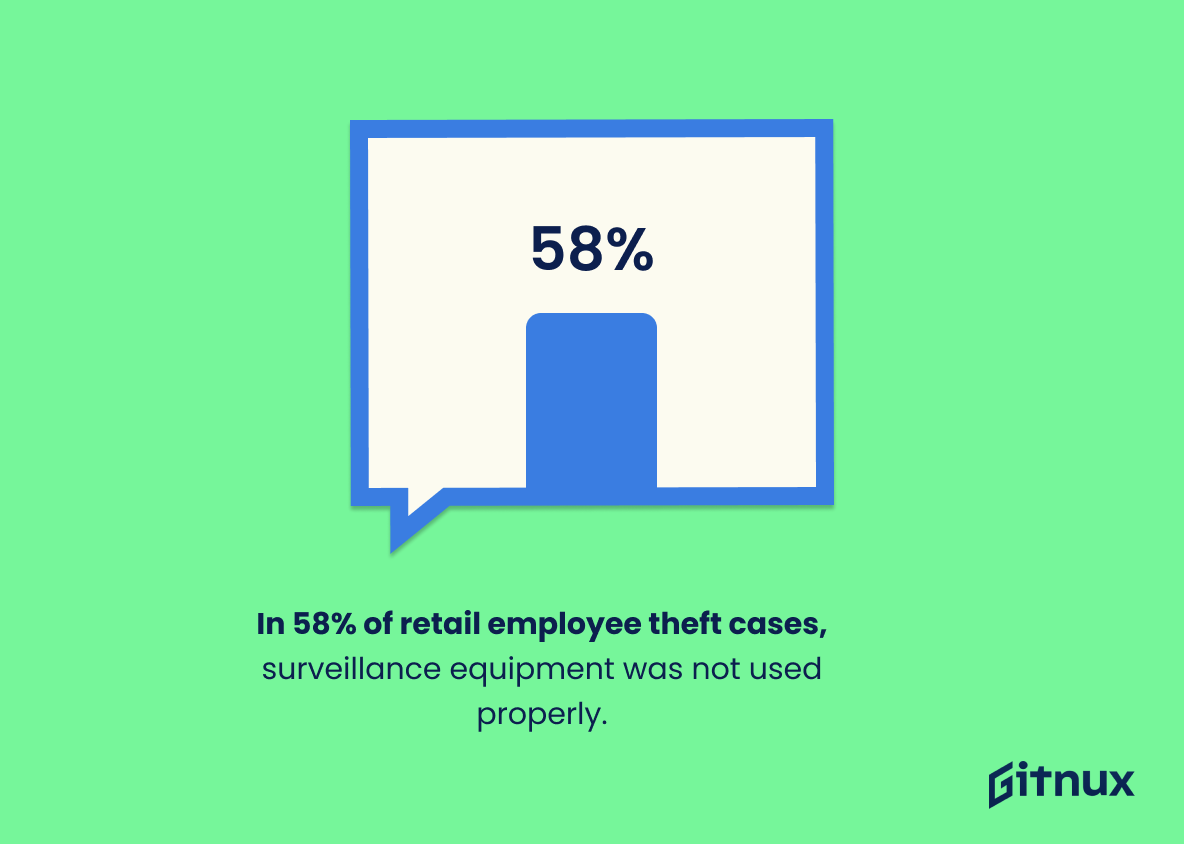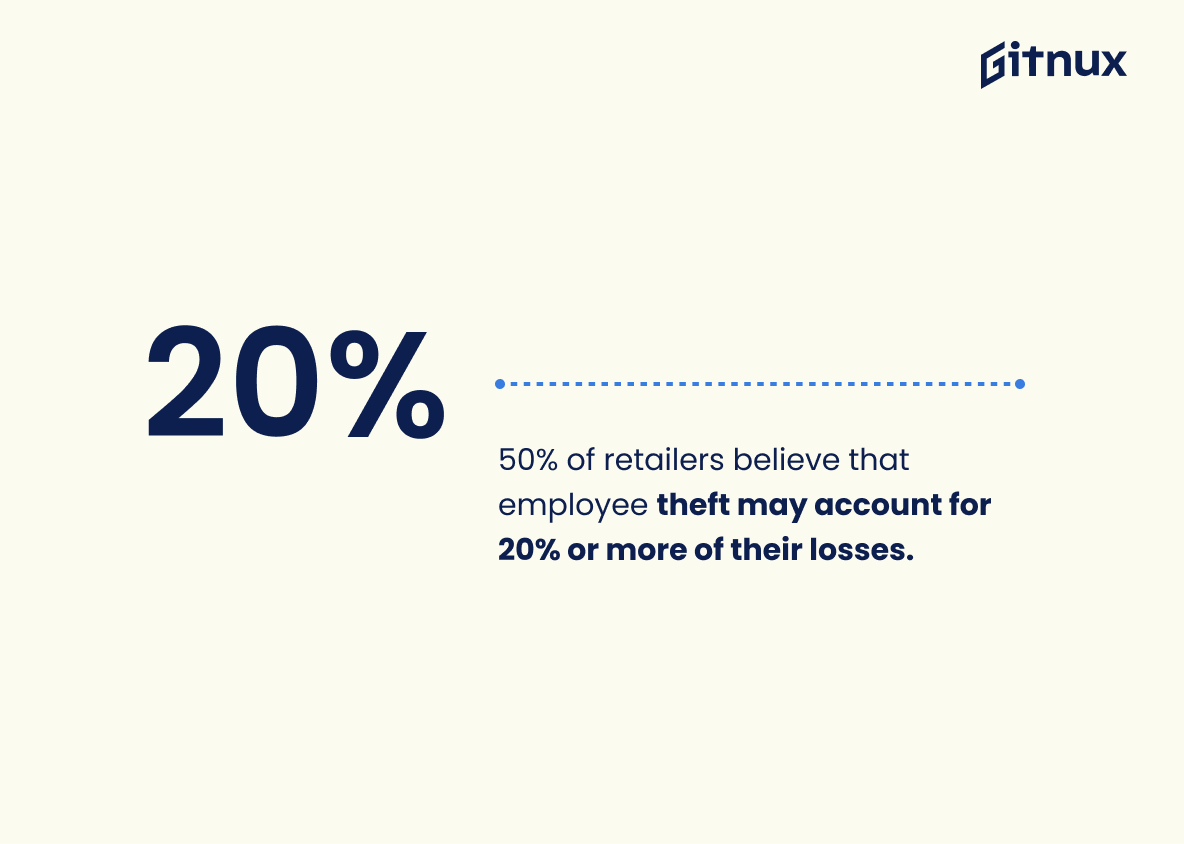Employee theft is a major problem for businesses in the United States, costing them an estimated $50 billion annually. Unfortunately, it’s also quite common – approximately 75% of employees have stolen from their employer at least once. Even more concerning is that 37.5% of employee thieves are never caught and retail workers steal at a rate 5.5 times higher than non-employees do.
The average amount stolen by each employee can be significant too – up to $1,264 per incident on average – and it takes 19 months on average before they’re detected after first committing theft. Smaller businesses may be particularly vulnerable as 64% report having experienced some form of employee theft already while 79% consider it a major concern for their business operations overall.
To make matters worse, men account for 55% of all cases involving retail worker thefts and companies without hotlines to report such incidents experience median losses 50 percent higher than those with one in place. Pre-employment background checks can help reduce the risk significantly though; 35 percent fewer dishonest employees were reported when these measures were taken compared to those who didn’t use them last year alone. In total over 80 thousand dishonest retail employees were apprehended in 2018 making up 30 percent of all shoplifting cases nationwide during this period according to recent statistics available online today..
Retail Employee Theft Statistics Overview
The average retail theft amount by employees is $1,264.
This statistic serves as a stark reminder of the financial impact that retail employee theft can have on businesses. With an average amount of $1,264 stolen per incident, it is clear that this is a problem that needs to be addressed.
The average amount of time between hiring and first theft incident is 24.6 months.
This statistic is a valuable insight into the effectiveness of retail security measures. It indicates that, on average, it takes over two years for a theft incident to occur after a new employee is hired. This suggests that retailers are doing a good job of screening and training their employees, as well as implementing security measures that are effective in deterring theft.
64% of small businesses have experienced employee theft.
This statistic is a stark reminder of the prevalence of employee theft in small businesses. It serves as a warning to retailers to be vigilant in their efforts to protect their assets and to take the necessary steps to prevent such occurrences. It also highlights the importance of having a comprehensive security system in place to deter and detect any potential theft. By understanding the scope of the problem, retailers can better equip themselves to protect their business and customers.
The average restitution ordered for employee theft is $23,000.
This statistic serves as a stark reminder of the financial consequences of retail employee theft. With an average restitution of $23,000, it is clear that the cost of such theft can be significant. This serves as a warning to employers to take the necessary steps to protect their businesses from such theft.
Companies with hotlines to report theft have a 50% lower median loss than those without.
This statistic is a powerful indicator of the effectiveness of hotlines in reducing retail employee theft. It demonstrates that having a hotline in place can be a highly effective tool in curbing losses due to theft, and should be seriously considered by any business looking to protect their assets.
Men are responsible for 55% of employee theft cases in retail.
This statistic is a stark reminder that male employees are disproportionately responsible for employee theft cases in retail. It is a sobering reminder that employers must be vigilant in their efforts to prevent and detect employee theft, particularly when it comes to male employees. This statistic should serve as a call to action for employers to take proactive steps to ensure that their employees are not engaging in theft.
In 58% of retail employee theft cases, surveillance equipment was not used properly.
This statistic serves as a stark reminder that, despite the prevalence of surveillance equipment in retail stores, it is not always being used to its full potential. It highlights the need for retailers to ensure that their surveillance equipment is being used correctly in order to effectively combat employee theft.
50% of retailers believe that employee theft may account for 20% or more of their losses.
This statistic is a stark reminder of the prevalence of employee theft in the retail industry. It highlights the need for retailers to take proactive steps to protect their businesses from the financial losses associated with employee theft. By understanding the potential impact of employee theft, retailers can develop strategies to reduce the risk of theft and protect their bottom line.
Conclusion
Employee theft is a major problem for businesses in the US, costing them an estimated $50 billion annually. Approximately 75% of employees have stolen from their employer at least once and 37.5% are never caught. Retail employees account for 43% of inventory shrinkage due to theft with the average amount being $1,264 per incident. It takes an average of 24.6 months between hiring and first theft incident and retail workers steal at a rate 5.5 times higher than non-employees on average taking 19 months before detection occurs 64% of small businesses have experienced employee theft with restitution ordered averaging around $23,000; companies that use hotlines to report thefts experience 50% lower median losses than those without one while men are responsible for 55%. Surveillance equipment was not used properly in 58%, 79 % reported it as a major concern increasing during holiday seasons making up 33%; 50 % believe 20+ percent loss due to employee theft which accounts 30 % all cases apprehended 80k dishonest retail employees 2018 pre-employment background checks reduce 35%.
References
0. – https://www.www.cnbc.com
1. – https://www.www.securitymagazine.com
2. – https://www.www.thebalancesmb.com
3. – https://www.www.nrf.com
4. – https://www.www.shopventory.com
5. – https://www.www.hayesinternational.com
6. – https://www.www.aicpa.org
7. – https://www.www.tenable.com
8. – https://www.www.agilenceinc.com

